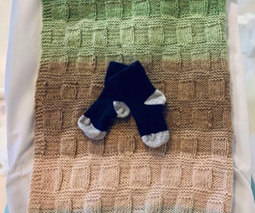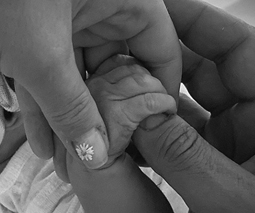New program offers hope for premature babies

A new program could be the key to reducing the number of premature births in Australia.
Led by Professor John Newman, the program began in the King Edward Memorial Hospital in Perth and after one year Western Australia recorded an eight per cent drop in pre-term births during 2015, the ABC reports.
The program will now be rolled out to other states in a bid to continue reducing the rates of pre-term births, while a parallel program is to be run in New Zealand.
What is a pre-term birth?
A pre-term birth is when a baby is born before 37 weeks. Depending on the degree of prematurity, babies born early may need medical support for breathing, their hearts, lungs, tummy and bowels as these organs won’t have had the chance to fully develop. Pre-term babies are also at risk of disability including visual and learning problems as they grow older.
Around 15 million babies are born too early every year, and many do not survive. “Pre-term birth is the single greatest cause of death in children up to five years of age and a major source of disability,” Professor Newnham said. “We now have the opportunity to prevent this at its source during pregnancy.”
Read more about premature babies here:
- Everything you need to know about premature babies
- What your premmie baby will need once they come home
- 8 amazing facts about miracle premmie babies
Having a premature baby is tough
Mum of four Amber Bates, told the ABC that she doesn’t want other families to go through what they did with their fourth baby, who was born at just 25 weeks gestation. With her first three babies arriving at full-term, baby Adison’s early arrival was a shock for the whole family. Amber spent over 100 days at his bedside, unable to hold him for weeks. “We had to watch him grow and learn to breathe by himself,” she said. “It was a very challenging time for all of us.”
Causes of premature birth
The cause of premature births isn’t always known; however, there are some risk factors that increase the likelihood of an early delivery, such as carrying multiples, a previous premature birth and conditions like diabetes and high blood pressure. Some conditions of the uterus and cervix can also contribute to premature births, and it’s this area that the program focuses on.
‘The Whole Nine Months’
With nine months being the ideal gestational age for a baby to develop before birth, the program’s campaign is called The Whole Nine Months and features a state-wide obstetric outreach service that could prevent the premature births of thousands of babies. Pregnant women under this program will have their cervix measured mid-pregnancy, and for those identified with a shortened cervix, which can indicate the possibility of a preterm birth, they will be administered with a course of steroids to reduce that risk.
Even just a few more days in utero counts
If preterm birth is suspected, the treatment offered under the program could help babies remain in the womb environment for longer. Even just a few more days in utero dramatically increases their chances outside of the womb. “The chance of survival for very young pre-term babies is increased enormously just by a few days,” says Professor Newnham. “A tablet made of natural progesterone in the vagina, one each evening, will nearly half the chance of her delivering early,” Professor Newnham said. “Every day that we can prolong a pregnancy is a day less of worrying in the nursery.”
For more information about the program, visit the website.









